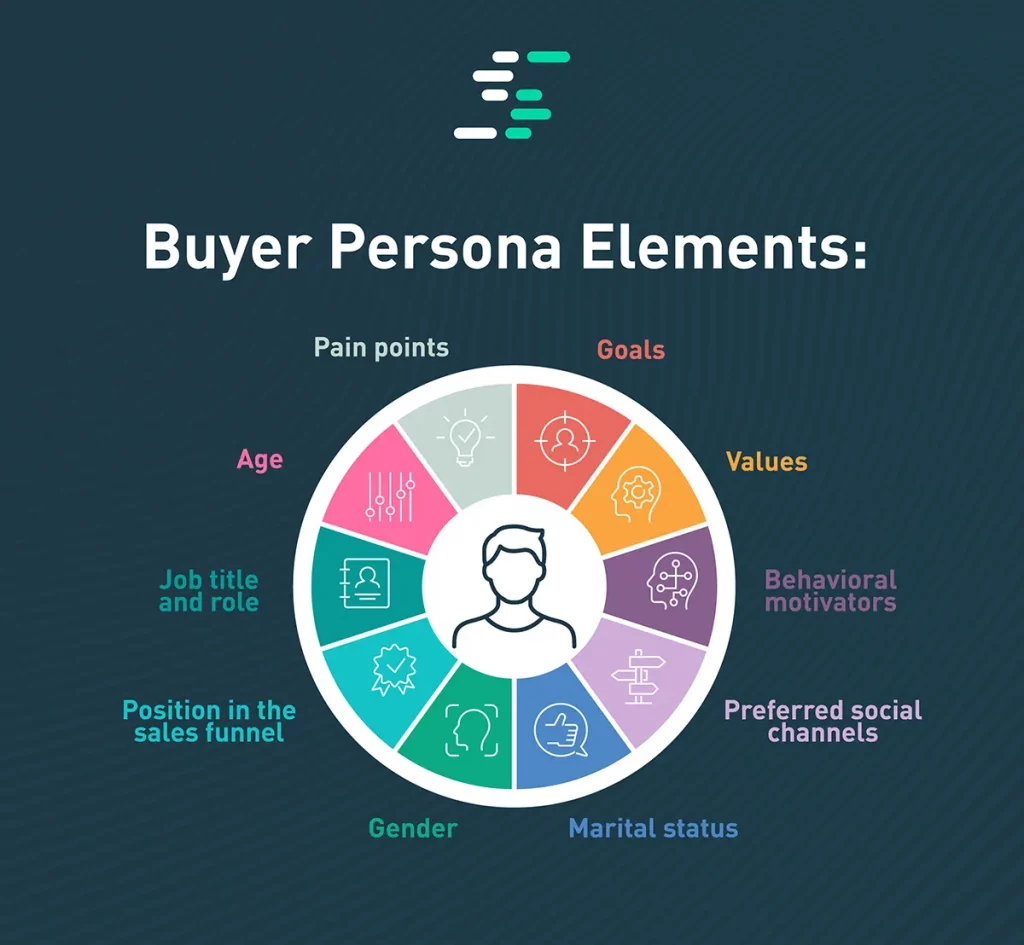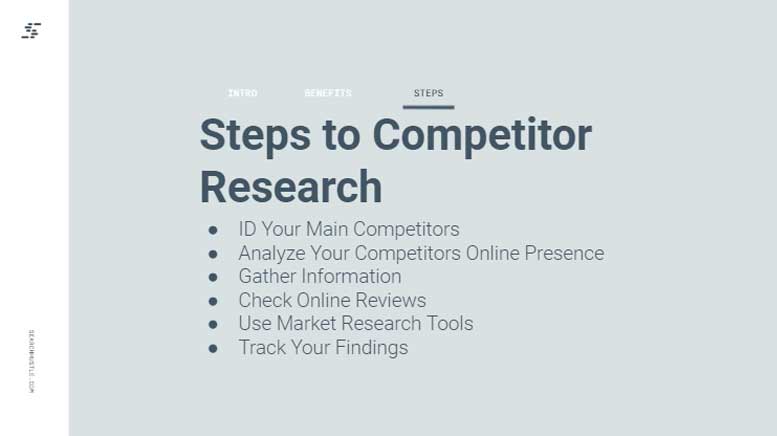Buyer Persona
Creating a buyer persona can lead to knowing an ideal target audience better, and knowing your audience will help determine the type of marketing campaign to utilize.

This will help develop effective, targeted content that speaks directly to end users and the problems they face. Finding a solution to their problems will help create brand loyalty and repeat customers.

Why do I need to create a buyer persona?
A high-quality marketing campaign has to include a buyer persona because it represents a target audience. A buyer’s persona is a fictional person that represents a company’s ideal customers, and researching their wants and needs is critical to a campaign’s effectiveness. Once you have a clear picture of who you are trying to reach, it is so much easier to create an effective plan.
A new insight will be gained with things like what drives traffic to the competitor’s website pages, what they’re doing to gain new leads, how they retain current customers, and much more.
Through competitor research, the business will be able to:
Research buyer personas
In developing a buyer persona, you’re creating a story around the people who are most interested in your product or service. In order to be more effective, you must know as much about them as possible, so you can provide personalized service, relevant content, and helpful information. Also, find out who is buying from you currently, and that will help determine what type of person is going to buy in the future.
Checking in on the competition is also a way to find out who is buying products similar to your own. If a competitor is killing it in a certain part of the market, find out what led to their success.


Don’t forget about your own analytics
By looking at your website analytics, social media ads, and pay-per-click ads, you can get an amazing picture of your own successes and failures. When looking through these reports, pay attention to the demographics and focus on what pages visitors use the most.
Steps to Competitor Research
Actions the competitor makes in digital marketing can be tracked and analyzed. The different steps of research will help to construct comprehensive marketing objectives to keep the business growing and successful.

Analyze The Competitors Digital Footprint
If the competitor’s website is outranking the business website in organic search, there has to be a reason. If they have a higher rank in the search engine results pages (SERPs), then it’s likely the competitor is also generating more impressions, clicks, leads and revenue from the SERPs. Uncovering details about their search engine optimization (SEO) best practices can help develop an effective strategy.
Aside from tracking the organic performance of a competitor in the SERPs, keep an eye on their pay-per-click (PPC) efforts. Otherwise known as paid ads, these are often found at the top of the organic results. While researching this, pay close attention to the search volume and cost per click (CPC) of the keywords used in the PPC ads.
Lastly, be sure to research the social media strategy of competitors. Platforms like Instagram, YouTube, Twitter, and Facebook all allow companies to run ads. When clicking on these ads, users are then typically directed to a custom landing page on the competitor’s site.
- The competitor’s most successful keywords and organic rankings.
- What pages have the highest hits due to organic search.
- What socials and other directories they utilize, and how often.
- How they utilize CTAs.
- The keyword volume and difficulty score of keywords used by competitors.
- Loading speed of site pages.
- Who links back to their website.
- The overarching theme at the page level.
- The overarching theme at the website level.
- Performance of mobile version of site and how user friendly it is.
- Their value proposition.
- Their robots.txt.
- Their previous positions in the Wayback machine.
Gather Information
There is a vast quantity of other collectable data from competitors to supplement the research and to strengthen the marketing objectives.
To maintain a competitive edge on pricing, know the competitors pricing, discounts, and deals. Read all of their Google reviews and understand what people say they do well and what they are terrible at – and exploit this information in the ad copy.
Another vital factor to look at is whether the competitors offer online shopping and what their shipping costs look like. Nowadays, consumers prefer the convenience that online shopping offers. In 2020, around 88% of the adult population in the U.S. made an online purchase, and that figure is expected to climb. For example, if the biggest competitors offer free shipping, then offer the same cost-cutting feature.
How are the competitors handling the marketing of their products or services? Do they have a blog on their site? Are they publishing ebooks or case studies?
Other details to take note of include:
- Webinars
- Whitepapers
- Podcasts
- Infographics
- Press Releases
- FAQs Section
- Content, content, content
Always pay close attention to the content strategy of the competitors. If a competitor has a blog, find out the following: how often are they posting, topics, lengths, formats (HTML, audio, video, images) they are using, frequency. These details are the benchmarks of your own content strategy.
Check Online Reviews
Use Market-Research Tools
With digital marketing, there are several market-research tools to use at your disposal. Many of these tools will require a paid subscription, while a few are either free or allow a free trial for several days.
- Google Alerts: Can monitor the web for specific phrases. This tool can track your brand name along with the names of competitors. Also, set alerts for unique industry phrases that might be relevant.
- Backlink/Content Checkers and Tools: This type of tool can view a competitor’s backlink profile, domain strength, successful content, and content gaps. This gives actionable insight into a competitor’s strategies and strengths and even potential lead sources.
- Quora: Often overlooked, Quora is a free forum-style site that offers valuable insight into what customers are thinking. By checking Quora, a lot can be learned about what customers are saying about the competition.
Track The Findings
All of the findings should be compiled into a single document (preferably Google Sheets) and then organize the data so that you can better visualize what has been learned.
Before comparisons are drawn, be sure to have a baseline established of your own business. Be sure to record all relevant information into the spreadsheet the same as you would the competitor. This will give a baseline to compare against the competitors.
Why Ongoing Competitor Research is Key
Keep in mind that the market is ALWAYS changing. If you’re not keeping constant tabs on it, there’s a risk of being unaware of a major shift until it’s too late. That’s why maintaining ongoing competitor analysis is key to success.
In the end, competitor research should allow a competitive edge by learning from and adopting a rival’s successful marketing strategies.

Ready to Take Your Search Hustle Further?



